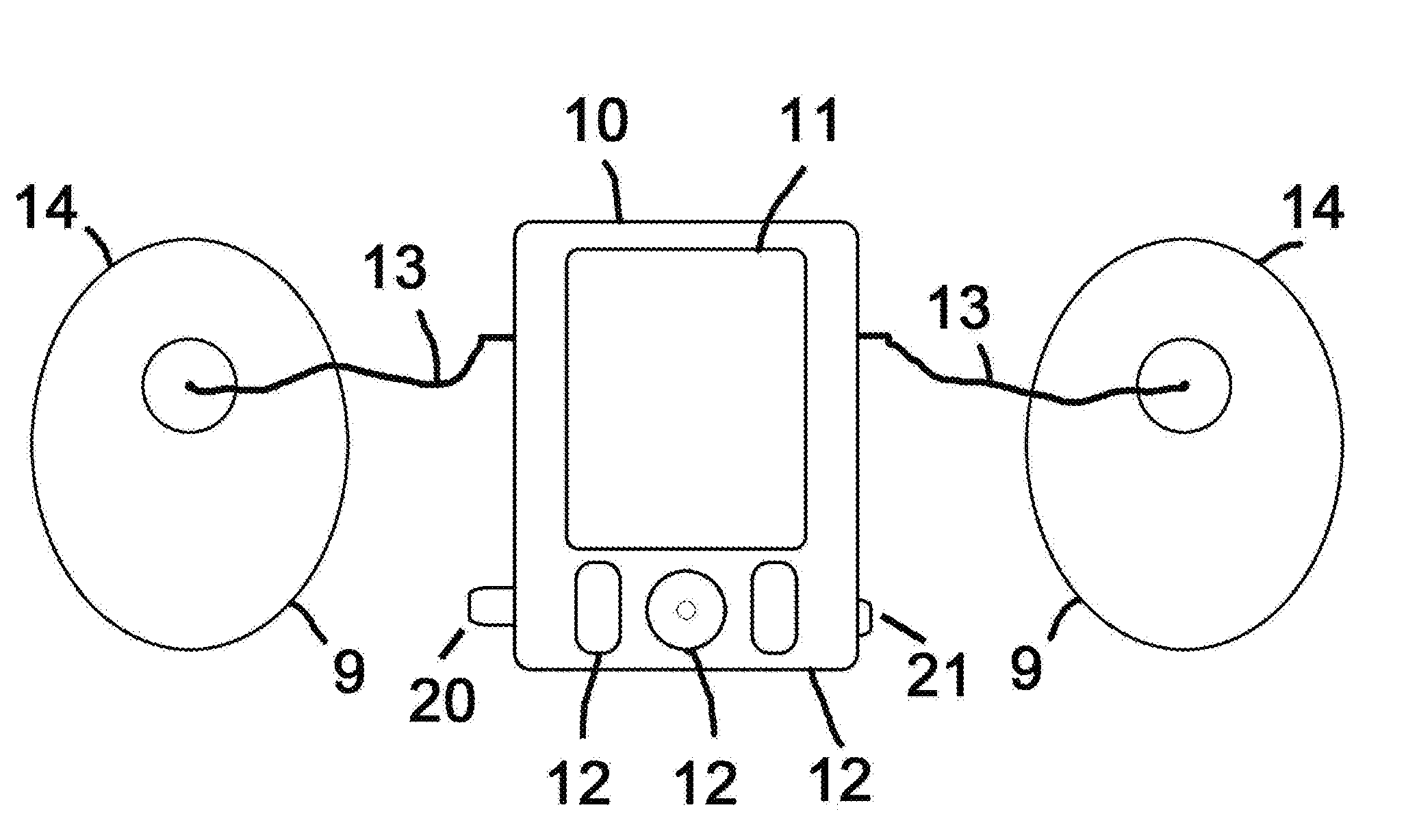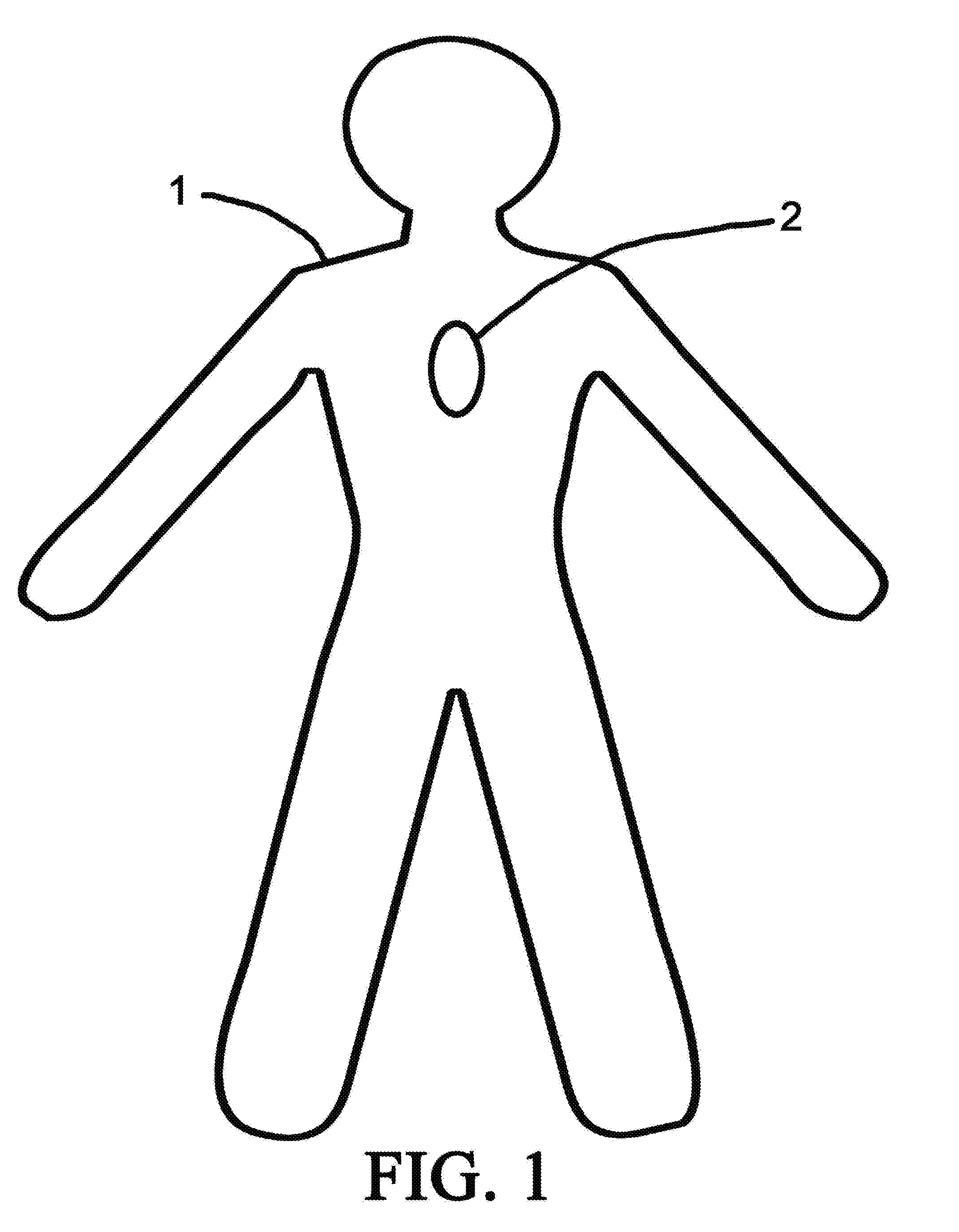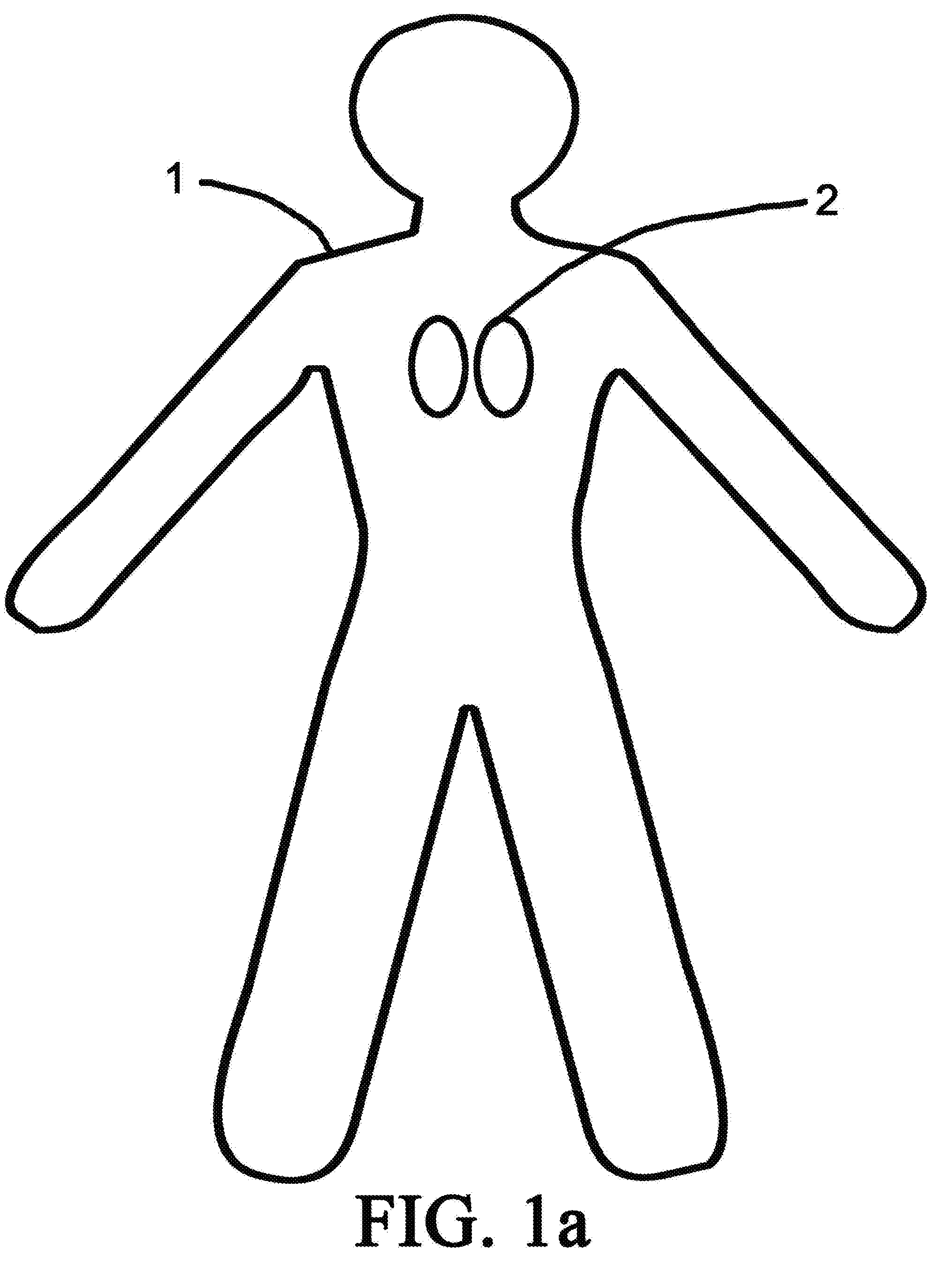Electronic Cardiopulmonary Resuscitation and Bleeding Control
a technology of electrocardiographic and pulmonary resuscitation, applied in the field of medical procedure methods, can solve the problems of difficult internal closure of bullet or knife wounds, high cost of large devices such as lucas, and achieve the effects of not being very portable, being easy to carry, and being inexpensive and small
- Summary
- Abstract
- Description
- Claims
- Application Information
AI Technical Summary
Benefits of technology
Problems solved by technology
Method used
Image
Examples
Embodiment Construction
[0059]The invention generally relates to controlling the heartbeat, blood flow and bleeding. In particular, the invention provides a way to use the bodies own muscles and tissue to control blood flow using a portable, small-footprint electrical device like a TENS unit connected to the body using wires connected to pads / connection points placed on a persons body. The body is controlled by electricity. We use the electric unit to send electricity to the body to over rule the bodies signals and control the body with our electrical input. During cardiac arrest we send electricity to the heart in pulses to tell it to compress and release which pumps blood. This can be done with an automatic program or manually. The intensity of the electricity can be controlled manually and adjusted for the patients size, weight and other factors. To control bleeding we send electricity to the body to constrict the muscles and blood vessels, electricity flows through the path of least resistance best, to...
PUM
 Login to View More
Login to View More Abstract
Description
Claims
Application Information
 Login to View More
Login to View More - R&D
- Intellectual Property
- Life Sciences
- Materials
- Tech Scout
- Unparalleled Data Quality
- Higher Quality Content
- 60% Fewer Hallucinations
Browse by: Latest US Patents, China's latest patents, Technical Efficacy Thesaurus, Application Domain, Technology Topic, Popular Technical Reports.
© 2025 PatSnap. All rights reserved.Legal|Privacy policy|Modern Slavery Act Transparency Statement|Sitemap|About US| Contact US: help@patsnap.com



